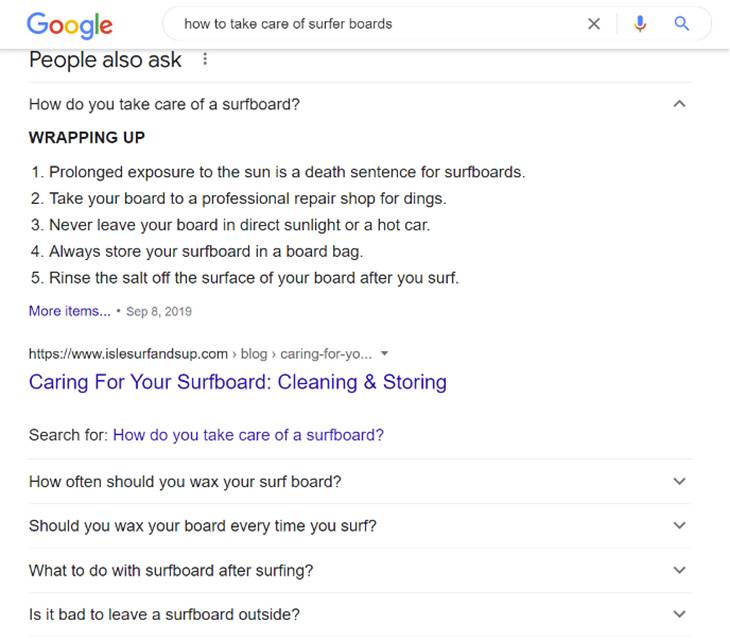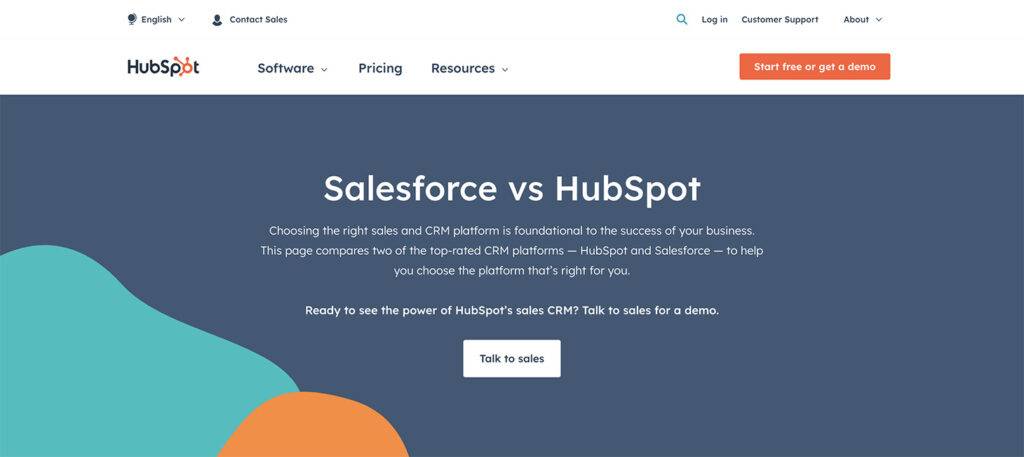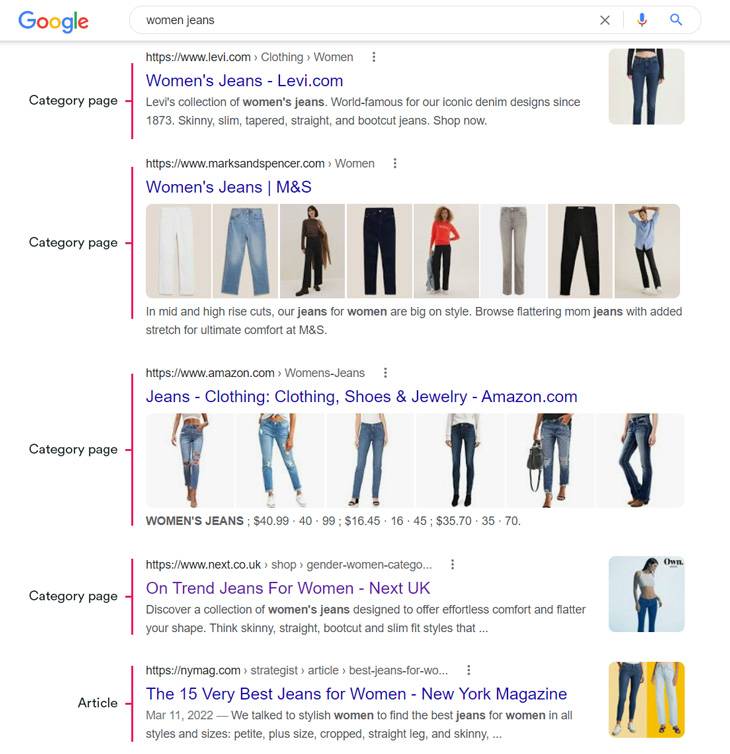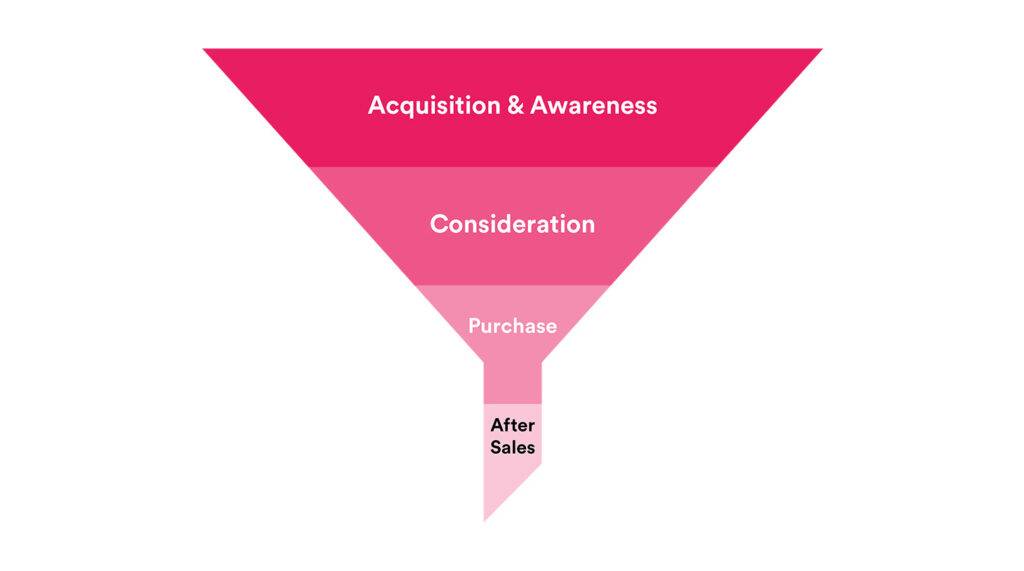Mapping keywords to the customer funnel
Most customers go through different stages before buying a product; this is known as the purchase journey (or purchase funnel). During this process, users carry out multiple searches until they reach the point of converting (making a purchase).
By making sure your site has content to target searches along the whole customer funnel, you will be avoiding potential gaps – which can lead to traffic losses – as well as assessing the consumer value of keywords.
Whilst there are several versions of the customer funnel, we’ve chosen the one we believe better condenses the user journey from an SEO perspective:
1. Acquisition and Awareness Keywords
Sitting at the top of the funnel, these have an informational intent and allow customers to become familiar or learn something about a product, service or brand ahead of making their final purchase decision.
For example, if a brand offers a complex product or service, an informational piece of content explaining what the product/service is, its characteristics or its benefits, can be very valuable. In these scenarios, brands will want to target awareness keywords.
Keywords at this level can act as a filter process to get rid of generic traffic that will not convert.
However, depending on the market, informational content may also fall under acquisitional intent. This typically happens when users are already familiar with the product/service in question. For example, an e-commerce business selling surfboards may have an article about how to take care of a surfboard (rather than an article explaining what a surfboard is). In this situation, broad keyword research around the topic in question is more valuable (and more specifically, FAQ-orientated type of queries), as this will provide answers to the questions that the target market is actually searching for. This is also the type of content that usually ranks in the ’People also ask’ section of the Search Engine Results Pages (SERPs):

2. Consideration Keywords
These types of keywords can fall under two main intents:
Marginal Utility
These type of queries are searched for when users need more detail about a product to justify a purchase decision. This typically happens when an exact / near comparison to another competitor is not available, but the customer still needs to make a judgement call on the added value of making the purchase. In these scenarios, content that reflects the product’s USP will be key in persuading potential customers that the product in question is worth purchasing. For example, having an internal reviews page for the product, or customer case studies for a service-based website would serve this purpose.
Typically, search volumes for this group of queries tend to be lower (especially for niche verticals with lower demand) but this doesn’t mean it doesn’t have (or has less) consumer value. Not focusing on consideration-based queries can lead to a break in the conversion funnel with potential customers bouncing off the website to look for information elsewhere, which will lead to a decrease in conversions down the line.
Competitor Comparisons:
Keywords that include modifiers like “vs” for brands or products are good examples of comparison consideration. An example of this could be “Surf boards vs paddle boards”. Another great example is HubSpot, which has a dedicated landing page detailing its features as a CRM platform against its main competitor: Salesforce.

Implementing direct comparisons will allow businesses to gain control over their product or service narrative. However, this is often the trickiest and most neglected section of keyword targeting strategies as, for several reasons, brands may not want to make direct comparisons between their products and their competitors’. Furthermore, lower search volumes make this group of terms less appealing to brands..
3. Purchase Keywords
These are queries that lead users directly to transactional pages. For a clothing e-commerce website like Gap, this would include keywords like “women’s jeans” where the SERPs would likely be dominated by product listing pages (PLPs) or product detail pages (PDPs).
Often businesses focus heavily on acquiring position 1 for high-volume terms only. Whilst this may be an appropriate strategy for strong and authoritative brands (such as Asos or Gap seeking to rank in 1st position for “Jeans”). However, for most businesses, a more realistic goal is to prioritise longer tail keywords with a more specific intent.
Continuing with the jeans example, a vintage denim e-commerce store may want to target the keyword “three quarter length vintage jeans for ladies” with a PLP. Whilst search volumes will be lower, this keyword will be far more achievable (due to lower competition) and will convert better than a much broader term like “jeans”, as this is sitting further down the purchase funnel.
These types of keywords can be constructed by taking a broad generic term (like “Jeans”) and appending some modifiers, such as:
- A USP – What makes the product/service unique? An example here could be “couture jeans”. For established brands, the brand name itself could also be a USP qualifier like “Gap jeans” or “Hunter boots”.
- Enhanced product / service details – What are the product’s main characteristics? How can we better describe it? Using the example above, “three quarter length jeans” or “vintage jeans” would be good examples of additional information that users may be searching for specifically.
- Value terms – Qualifiers like “luxury” or “budget” can help you target a more specific audience. For example, if you sell expensive clothing, you’ll want to target users specifically looking for this type of product.
- Call to action terms – Adding the “buy” modifier in e-commerce transactional pages is no longer necessary, as Google generally understands user and page intention on these. However, adding a call to action like “download” may be necessary for service-based businesses where Google may not be as good at understanding transactional intent on service pages.
4. After-Sales Keywords
What after-sales keywords look like will vary depending on the context. In essence, this keyword set aims to address potential support enquiries that a customer might have after they have purchased the product. For example, complex products/services could target keywords associated with user guides to help existing customers use the product/service correctly.
Whilst this strategy might not be as crucial for ubiquitous everyday products or services, websites should still target after-sales keywords to keep customers happy after the purchase phase. Examples include “how to return a product to Gap”.
This group of keywords will aid loyalty and customer satisfaction, which will be crucial to increase repeat visits and secure future sales.
Avoid negative keywords
Negative keywords are those closely related phrases that aren’t relevant to your target audience. They are part of a broader landscape for a certain topic but do not sit within the conversional funnel of a particular brand. An example would be a luxury brand targeting keywords with modifiers such as “affordable”, “cheap” or “budget”.
To make sure they stay relevant to their target audience, brands should exclude negative keywords from their targeting strategy. There are a few reasons for this:
- From an SEO perspective, brands are unlikely to perform well for negative keywords, as the content on their landing pages won’t be relevant enough to fulfil the users’ intent and, therefore, will struggle to rank.
- From a general customer value perspective, trying to target negative keywords can lead to a form of cognitive dissonance, as users might become confused on what the brand is trying to offer.
A few other things to keep in mind
When it comes to the keyword mapping process of assigning keywords to your pages, you need to make sure your chosen page successfully fulfils user intent. Reviewing what type of landing pages appear on the SERPs for each keyword will help you understand its user intent and where in the conversion funnel the keyword in question should sit (and, therefore, the type of content required to rank for it).

Don’t forget that the SERPs are dynamic. Even though a keyword may require a specific type of content today, this could change over time depending on a number of factors, such as seasonality, Google updates or other external elements (e.g., events, news, etc.). For example, during the Christmas period, it’s more common to see transactional pages ranking higher for queries that may have traditionally yielded a more informational SERP.
We recommend you keep a close eye on SERP changes periodically, after any major updates and during times of known seasonal fluctuations, to ensure your keyword mapping strategy is fully up to date and aligned to those changes.
As mentioned earlier, factoring customer value into your keyword targeting strategy will help you meet your users’ intent more effectively, which will have a direct impact on both the quality and quantity of your traffic, with the end result, of course, of increased sales and profit.
Furthermore, with its constant updates, we all know Google is determined to serve content that is human-centric as opposed to content that’s simply created for SEO purposes. By mapping keywords to the conversion funnel and making sure landing pages are optimised successfully to answer the intent of their users, brands will have more chance of ranking higher organically.
If you need help during your keyword research or keyword mapping phases, get in touch with us and we’ll get one of our specialists on the case.
References:
[1] Holbrook, M.B. (1986). Emotion in the consumption experience: Toward a new model of the human consumer (R.A. Peterson) (Ed.), The role of affect in consumer behavior: emerging theories and applications. Heath, Lexington, MA (1986), pp.17-52.
[2] Lapierre, J. (2000), “Customer‐perceived value in industrial contexts”, Journal of Business & Industrial Marketing, Vol. 15 No. 2/3, pp. 122-145.

